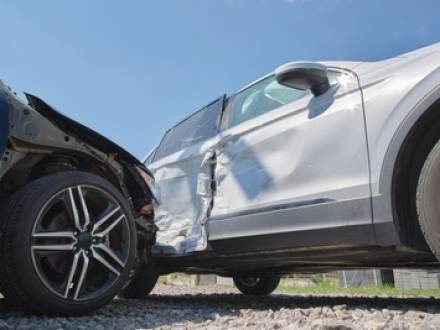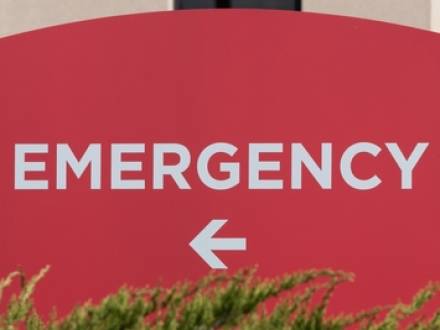
Recent Blog Posts
How to Know if You Should Accept a Truck Accident Settlement Offer
 After a serious truck accident, an insurance adjuster might contact you with a settlement offer before you have even had a chance to see all of your medical bills. You might be in pain, out of work, and unsure of how long it will take to recover, yet the offer is on the table now. The pressure to accept a quick payout can be overwhelming.
After a serious truck accident, an insurance adjuster might contact you with a settlement offer before you have even had a chance to see all of your medical bills. You might be in pain, out of work, and unsure of how long it will take to recover, yet the offer is on the table now. The pressure to accept a quick payout can be overwhelming.
Across Illinois, trucking companies and their insurers often move fast after a crash to protect their financial interests. Their goal is to settle your case before you have time to gather evidence or speak with an experienced Will County, IL personal injury attorney. That is why it is critical to understand what a fair settlement actually looks like and how to know when an offer is far too low.
This guide will help you understand the legal, medical, and financial issues involved in evaluating a truck accident settlement. If you are seriously hurt, you need more than just compensation for your hospital stay. You need a long-term strategy and a legal team who will not hesitate to litigate aggressively when your future is on the line.
How Dangerous Intersections Contribute to Car Accidents
 Dangerous conditions on roadways can lead to serious traffic accidents, sometimes even causing multi-vehicle pileups. At busy four-way intersections, one driver’s negligence can cause tens of thousands of dollars in damages. If you or somebody you love has been injured in one of these accidents, you should seek out the legal services of a personal injury attorney.
Dangerous conditions on roadways can lead to serious traffic accidents, sometimes even causing multi-vehicle pileups. At busy four-way intersections, one driver’s negligence can cause tens of thousands of dollars in damages. If you or somebody you love has been injured in one of these accidents, you should seek out the legal services of a personal injury attorney.
At Schwartz Injury Law, we know just how disastrous an accident at an intersection can be for your health and your finances. Our team of knowledgeable attorneys is prepared to review every detail of your case and fight for fair monetary compensation on your behalf. We have a proven history of securing multimillion-dollar settlements through effective negotiation, so you can take comfort in knowing that your case will be handled by attorneys with real experience.
How Serious Are T-Bone Accidents?
T-bone accidents frequently occur at intersections, when one driver smashes the front of his or her vehicle into the side of another vehicle. These crashes have the potential to cause more damage than rear-end accidents because there is much less, if any, of a buffer between the struck car and the vehicle that drove into it. Due to the forces involved, this puts the struck driver at serious risk. It is not uncommon for victims of T-bone accidents to walk away with several broken bones, concussions, or other worse injuries.
Why Catastrophic Injury Claims Can Involve Future Damages
 If you have been grievously injured in an accident caused by another person, you may have a legal recourse to get paid for your damages. However, before launching into a claim, you should consider how much your claim is worth. If your injuries have long-term implications, you may be entitled to more than just payment for medical expenses. A Joliet, IL personal injury attorney can represent you in a claim to fight for your right to compensation after a serious accident.
If you have been grievously injured in an accident caused by another person, you may have a legal recourse to get paid for your damages. However, before launching into a claim, you should consider how much your claim is worth. If your injuries have long-term implications, you may be entitled to more than just payment for medical expenses. A Joliet, IL personal injury attorney can represent you in a claim to fight for your right to compensation after a serious accident.
At Schwartz Injury Law, we understand just how devastating a catastrophic injury can be to your overall health, happiness, and future. That is why we advocate for a full payout in every case we handle, using shrewd negotiation strategies to work toward desirable outcomes. In prior cases we have handled, we secured millions of dollars through dedicated representation, including a $5.1 million settlement on behalf of a woman who suffered catastrophic injuries in an auto accident.
Does a Truck Have a Black Box?
 If you have been badly injured in a truck accident, you may be inundated with bills and expenses from your medical treatment. This could only get worse if you are unable to return to work while you recover from your injuries. However grim your situation may seem, you may have an avenue to get paid through a personal injury claim. An Illinois truck accident attorney can represent you in a claim for compensation after a collision with a commercial tractor-trailer.
If you have been badly injured in a truck accident, you may be inundated with bills and expenses from your medical treatment. This could only get worse if you are unable to return to work while you recover from your injuries. However grim your situation may seem, you may have an avenue to get paid through a personal injury claim. An Illinois truck accident attorney can represent you in a claim for compensation after a collision with a commercial tractor-trailer.
Building a case for a truck accident claim requires a strong foundation of evidence. One of the most crucial pieces of evidence in your claim may be the truck’s black box data. At Schwartz Injury Law, we can take steps to recover any available data to strengthen your case.
What Is a Black Box?
A black box (also called an event data recorder) is a device installed in most vehicles that stores data of various inputs from the driver. This includes data about steering, brake usage, throttle position, and more.
Why Are Seemingly Minor Car Accidents Sometimes Fatal?
 The loss of a loved one to a car accident is a heart-wrenching experience for anyone to go through. It can be all the more jarring if the accident did not seem serious at first, but caused a sudden, sharp downturn in health that eventually resulted in death. If somebody else caused the accident that claimed your loved one’s life, you deserve justice and closure. While no monetary award can ever close an emotional wound, an Illinois personal injury attorney can help you take legal action against the driver, advocating for a fair remedy on your behalf.
The loss of a loved one to a car accident is a heart-wrenching experience for anyone to go through. It can be all the more jarring if the accident did not seem serious at first, but caused a sudden, sharp downturn in health that eventually resulted in death. If somebody else caused the accident that claimed your loved one’s life, you deserve justice and closure. While no monetary award can ever close an emotional wound, an Illinois personal injury attorney can help you take legal action against the driver, advocating for a fair remedy on your behalf.
At Schwartz Injury Law, we represent surviving family members of car accident victims in wrongful death claims. Our law firm has secured multi-million dollar settlements and verdicts through aggressive legal strategies, including a $1.1 million settlement from a car accident death.
Most Common Causes of Serious Injuries and Deaths in Car Crashes
 Most car accidents do not result in serious injuries. However, when a collision goes beyond a simple fender bender, accident victims may be placed at risk of grievous harm. If you or somebody you love has been badly hurt in an auto collision, an experienced Will County, IL personal injury attorney can provide you with valuable representation and counsel to help you get the compensation that you deserve.
Most car accidents do not result in serious injuries. However, when a collision goes beyond a simple fender bender, accident victims may be placed at risk of grievous harm. If you or somebody you love has been badly hurt in an auto collision, an experienced Will County, IL personal injury attorney can provide you with valuable representation and counsel to help you get the compensation that you deserve.
Moreover, if you have lost a close relative to a car accident caused by the other driver’s negligence, a car accident attorney can file a wrongful death claim on your behalf. At Schwartz Injury Law, our lawyers are ready to take on your case, working with you to identify the exact cause of the accident and building a case for a full payout.
Excessive Speeding
Speed limits exist for a reason. When a driver exceeds the speed limit by 20, 15, or even 10 miles, the risk of a serious collision increases exponentially. The reason for this is twofold. First, going over the speed limit reduces your ability to react to incoming obstacles, so if another car comes to a sudden stop on the road ahead, you might be unable to brake in time. Second, the force of the impact from excessive speeding can result in more severe injury than if the driver had been going the speed limit. For instance, the sudden jolt of a collision at high speeds can induce whiplash.
Food Poisoning from Costco, Mariano’s, or Boar’s Head? You Need a Lawyer
 Food poisoning occurs when there are germs or other harmful things in a food or beverage. Symptoms of food poisoning usually begin within hours of eating the food but could occur several days after. For the most part, food poisoning is a mild illness that gets better without medical intervention but, in some cases, can cause severe illness, complications, and even death.
Food poisoning occurs when there are germs or other harmful things in a food or beverage. Symptoms of food poisoning usually begin within hours of eating the food but could occur several days after. For the most part, food poisoning is a mild illness that gets better without medical intervention but, in some cases, can cause severe illness, complications, and even death.
Across the United States, people expect the food products purchased at grocery stores, delis, and other food businesses to be safe. Unfortunately, food products can become contaminated, resulting in food poisoning. Recently, people in multiple states have been affected by Listeria and salmonella-contaminated foods, resulting in severe illnesses, death, and the necessity of a personal injury attorney.
If you or a loved one has been affected by food poisoning, you must understand your legal options for a product liability claim. With the assistance of an experienced Will County, IL personal injury attorney, steps can be taken to hold a negligent product manufacturer or other party responsible for food contamination. At Schwartz Injury Law, we provide effective legal representation for those who are victims of contaminated food, helping them recover fair financial compensation.
Understanding the Wrongful Death Act and Survival Act in Illinois
 Losing a family member because of the negligence of another individual can send devastating ripples throughout your household. On top of the emotional turmoil, there are typically numerous financial concerns that need to be addressed. A wrongful death can occur at any moment and understanding how to receive compensation for a loved one and for those left behind is a critical part of the healing process.
Losing a family member because of the negligence of another individual can send devastating ripples throughout your household. On top of the emotional turmoil, there are typically numerous financial concerns that need to be addressed. A wrongful death can occur at any moment and understanding how to receive compensation for a loved one and for those left behind is a critical part of the healing process.
A qualified Illinois wrongful death attorney with experience in these types of lawsuits can help you decipher the legalities and complexities that go into a wrongful death claim. At Schwartz Injury Law, we have represented many families seeking compensation for the deaths of their loved ones, and we have a proven track record of successful results.
When you work with our firm, you can be sure that we will conduct a thorough investigation into the fatal accident. In one case, we secured nearly $11 million in compensation following a truck collision that resulted in the death of a state trooper. In another case, we secured a $9.9 million award following the death of a man over 80 years old who was involved in a motor vehicle accident. Our highly experienced legal team is ready to go to trial to fight for the resolution that you deserve, and we will not accept any lowball settlement offers.
How Do I Prove a Trucker Caused My Accident?
 Truck accidents carry a higher rate of severe injury compared to most other kinds of motor vehicle accidents. Victims of these collisions are often left with debilitating, life-changing injuries, racking up thousands of dollars in medical expenses and damage to their incomes. If you or somebody you love has been badly injured in a truck accident, an Illinois personal injury attorney can help you take action to hold the truck driver responsible.
Truck accidents carry a higher rate of severe injury compared to most other kinds of motor vehicle accidents. Victims of these collisions are often left with debilitating, life-changing injuries, racking up thousands of dollars in medical expenses and damage to their incomes. If you or somebody you love has been badly injured in a truck accident, an Illinois personal injury attorney can help you take action to hold the truck driver responsible.
At Schwartz Injury Law, we know just how serious truck accidents can be. When a collision with a negligent truck driver upends your life, you deserve a fair remedy for your damages. Our lawyers have a history of winning significant settlements and verdicts for people injured in commercial truck accidents, including a $3 million verdict on behalf of a woman who suffered a closed head injury in a collision.
Severe Scarring and Disfigurement After a Dog Attack
 It is often difficult to predict how a dog will react in different situations. Even docile dogs can snap without provocation, leading to serious injuries and visible scars. If you or somebody you care about has been attacked by a dog, you may have grounds to file a personal injury claim against the dog’s owner or handler. An Illinois dog bite attorney can help you build a case to get the compensation you rightfully deserve.
It is often difficult to predict how a dog will react in different situations. Even docile dogs can snap without provocation, leading to serious injuries and visible scars. If you or somebody you care about has been attacked by a dog, you may have grounds to file a personal injury claim against the dog’s owner or handler. An Illinois dog bite attorney can help you build a case to get the compensation you rightfully deserve.
At Schwartz Injury Law, our personal injury lawyers are well-equipped to handle dog bite claims. In the past, we have secured millions of dollars for clients in premises liability cases, including a $2.2 million settlement for a woman who was severely injured after being terribly mauled by a dog. When you work with our firm, we will fight to make you whole for scars and disfigurement caused by a dog attack.
Injuries Caused by Dog Bites
Dog attacks can come with life-altering injuries. Victims may be left with permanent scars or loss of function in some body parts, such as the eyes, ears, nose, and fingers. These types of injuries usually require extensive surgery to correct. Children who are victims of dog attacks are at much greater risk of permanent injury or death. Additionally, the mental trauma caused by a dog bite can come with years of anguish.








